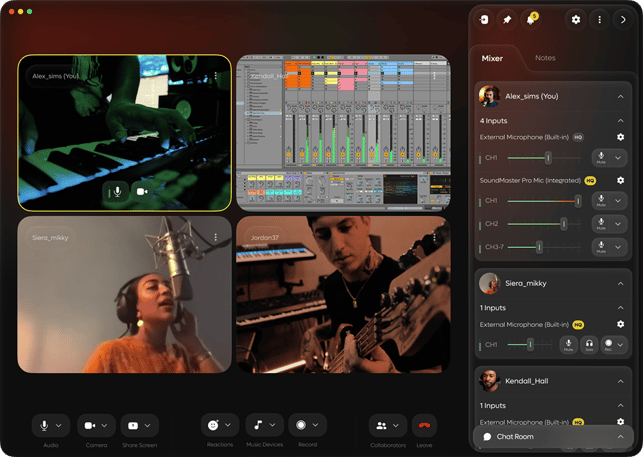This guest post was written by team at Muse.
When the world went remote after Covid, every industry had to rethink how people work together. For musicians, it was especially challenging - creativity thrives on connection, and making music apart just didn’t feel the same.
For Luis Caballero, a music producer and software engineer from Oklahoma, this reality hit even before the pandemic. After moving to LA in 2019, he quickly realized how difficult it was to collaborate with friends back home. What was once a seamless, in-person process suddenly required multiple apps, complicated audio setups, and expensive subscriptions.
What Makes Remote Music Production Challenging?
Making music is rarely a solo endeavor. It involves coordinating writers, producers, artists, and even engineers, which usually requires being in the same space, with the same tools, hearing the same sounds.
But for many artists, that isn’t always possible. Travel and studio fees add up quickly, and the most compatible collaborators don’t necessarily live in the same city, forcing creatives to share projects and ideas through emails and text messages. These back and forth exchanges disrupt creative momentum and make remote collaboration feel like a compromise instead of an opportunity.
Introducing Muse
It was these very challenges that inspired Luis and a small team of creators to build Muse, a platform designed to make remote sessions feel as natural as being in the same room without the complexity or cost of existing solutions.
Launched in 2021, Muse quickly gained traction in the music community, proving that remote collaboration didn’t have to be clunky or creatively limiting. Even as the world returned to in-person work, remote workflows remained essential for many creators, and Muse became a tool artists, producers, engineers, and educators around the world rely on.
How Muse Is Making Remote Music Production Easier and More Accessible
Muse works like a virtual studio. Think Zoom, but built specifically for music creators. Rather than piecing together multiple tools, creators get an all-in-one platform featuring:
- Video call
- Lossless audio streaming
- Remote recording
- Seamless integration with any DAW or audio device
- Screen control
- Drag and drop file sharing
- Remote MIDI

Now, creatives can create music together in real-time no matter where they are in the world.
Want to try it out for yourself? Download the Muse app for free.
What Other Ways is Muse Empowering Artists Today?
- Virtual Songwriting Camps - organizations like Songtrust are now able to host global songwriting camps online, bringing together the worldwide creative community and allowing artists to connect and collaborate in real time.
- Livestreams - Select artists are now able to turn their Muse sessions into a livestream, sharing the link with their fans so they can join a listening party, production breakdown, or even tune in on a remote cook-up. Educators can also host remote masterclasses and workshops.
- Content Collabs - Muse also uses their platform to promote other artists and creatives in the industry. Through original YouTube series like Goated and Cookup Sessions, Muse has built an engaging social media presence that extends beyond the app itself. These series highlight talent, celebrate creativity, and offer behind-the-scenes looks into the music-making process, transforming Muse into not only an online tool, but a creative community.
Remote collaboration is becoming a core part of how music gets made today. Muse grew out of the real challenges artists face, making it easier to stay connected with existing collaborators while also opening the door to new ones beyond their local circles. As the industry continues to evolve, tools like Muse are shaping a future where distance doesn’t get in the way of great music.





